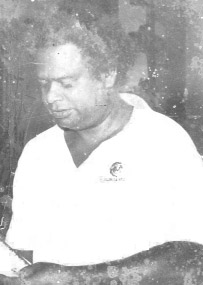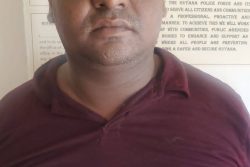Dan Kissoon started working at the Demerara Company at Diamond as a barefooted 15-year-old boy who ran errands in the General Stores and worked his way up to producing some of the finest alcohols ever made in Guyana.
Now age 72, Dan recalls the ups and downs that he and his co-workers faced in the sugar industry. He told Stabroek News that they worked hand-in-hand to recognise and patch leaking barrels, among other duties before he was offered training and the opportunity to work at Diamond Liquors Limited then, following the merger with Demerara Distilleries Limited.
Dan’s first outing there was in the General Stores which was managed by an expatriate named Watson. He remembers running errands for Watson and his co-workers’ general willingness to accept expatriate rule. On Watson’s departure, he was transferred to the Factory Laboratory where he underwent training in the analysis of juice, cane and sugar. When the training was complete, he was transferred to the Rum Store which was really the distillery that was managed by the Diamond Estate that formed part of the Demerara Company. Subsequently, Diamond Liquors Limited (DLL) was established with Chemist John Radzik Sochaki and the production of alcohol was done in a more professional manner.

Before long, a Bottling Plant was established and the production of neutral spirits became part of standard operations. Soon, instead of exporting alcohol in barrels, the Diamond distillery was exporting its commodities in special tanks that were ordered from overseas. The company then started producing Gilbey’s Gin which soon became popular on the local market, making headway in areas where the Demerara rum was known. Later, it produced alcohol in the forms of Diamond Club Whisky, Crème de Menthe and Crème de Cacao.
According to Dan, over the years, he had had several run-ins with management and he was not pleased when at age 55, some 40 years after he started working there to be told that his services were no longer needed.
The man believes that his role in the sugar union played a pivotal part in management’s decision. He said he was in the National Association of Agricultural, Commercial and Industrial Employees and remembers the fight when he was part of group agitating for recognition of the Clerical and Commercial Workers Union (CCWU) and for a period before the union’s recognition when he served on the workers’ committee which paved the way for the establishment of the CCWU.
Dan also said he suffered from a disability due to an injury to his foot but he often ignored it and “hopped” to work when it pained as he was the sole breadwinner for his family. He told this newspaper that he was left flabbergasted when the National Insurance Scheme (NIS) failed to recognise his injury as a disability, adding that he preferred how the system was operated in the Burnham days when contributors to the Scheme were free to examine their NIS cards and monitor their contributions. Dan lamented that after years contributions being made to the Scheme, some workers are now being told that there are no records of their payments.




